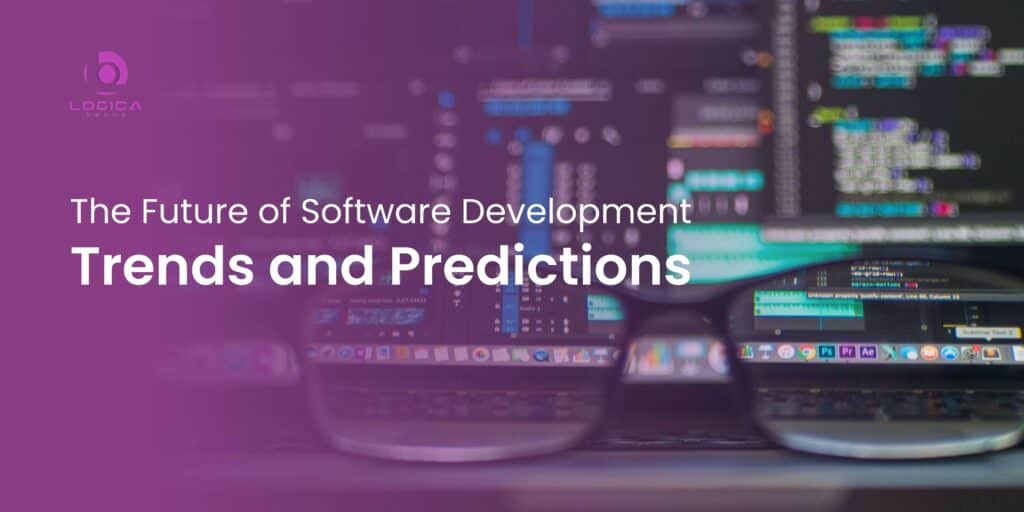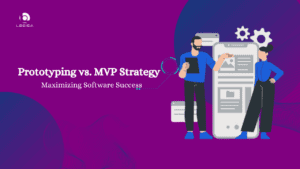In the future, it’s likely that software development will continue to evolve and become even more specialized. As technology continues to advance, the tools and techniques used by software developers will likely become more advanced as well. There will likely be a greater emphasis on collaboration and communication between team members, as well as a continued focus on agile methodologies and the use of automated testing and deployment.
Additionally, the use of machine learning and artificial intelligence in software development is expected to increase, allowing for the creation of even more sophisticated and intelligent applications. Overall, the future of software development looks to be an exciting and ever-changing field.
What are the trends and predictions in software development?
As technology continues to evolve, there are likely to be several trends in software development. One trend is the increased use of agile methodologies, which focus on flexibility and collaboration. This allows software development teams to quickly respond to changes and incorporate feedback from users. Another trend is the continued growth of cloud computing, which allows developers to build and deploy applications more easily and efficiently.
Additionally, there is likely to be an increased emphasis on automation and the use of tools to help automate repetitive tasks and improve efficiency.
Finally, the use of machine learning and artificial intelligence in software development is expected to grow, allowing for the creation of even more sophisticated and intelligent applications.
Future of Software Development(Key Trends):
The continued growth of agile methodologies
Agile methodologies are a set of principles and practices for managing software development projects. They focus on flexibility and collaboration which allow teams to quickly respond to changes and incorporate feedback from users. Agile methodologies are based on the idea of delivering small increments of functionality, or “sprints,” on a regular basis.
This allows teams to continuously improve their software and deliver value to users quickly. In the early days of software development, the dominant approach was called the “waterfall” method. This approach involved breaking the software development process into a series of distinct phases, such as analysis, design, implementation, testing, and deployment.
The approach had several limitations. For example, it was difficult to incorporate changes or feedback from users during the development process, and it often resulted in long delays and missed deadlines. In response to these limitations, alternative approaches to software development began to emerge.
Agile methodologies, such as Scrum and Kanban, allowed teams to quickly respond to changes and incorporate feedback from users. They also focused on delivering small increments of functionality, or “sprints,” on a regular basis, rather than trying to deliver the entire project at once.
The increasing use of cloud computing
Cloud computing refers to the use of remote servers and computing resources accessed over the internet, rather than local servers and computing resources. By using cloud-based tools and services, developers can access powerful computing resources without having to invest in expensive hardware. This makes it easier for teams to scale their applications and quickly respond to changing user needs.
Using cloud-based tools and services, developers can access powerful computing resources without having to invest in expensive hardware. This makes it easier for teams to scale their applications and quickly respond to changing user needs. cloud computing allows developers to focus on creating innovative applications, rather than worrying about infrastructure and maintenance.
For example, instead of spending time and effort setting up and maintaining a local server, developers can use a cloud-based service to host their application. This frees up time and resources that can be used to create new features and improve the user experience.
Overall, the use of cloud computing in software development is growing, and it is expected to continue to play an important role in the future. By using cloud-based tools and services, developers can build and deploy applications more easily and efficiently, and focus on creating innovative and sophisticated software.
The continued emphasis on automation
Automation is the use of tools and processes to automate repetitive tasks and improve efficiency. In software development, automation can be used to automate testing, deployment, and other processes. This can help ensure that software is of high quality and free of errors, and can save developers time and effort. Additionally, automation can help teams to be more productive and respond to changes more quickly. Automation can be used to improve efficiency and in the context of software development, automation can be used to automate various aspects of the development process, such as testing, deployment, and other processes.
Automation can help to ensure that software is of high quality and free of errors, by automatically running tests and checking for bugs. This can save developers time and effort and can help to prevent defects from being introduced into the code. Automation is already impacting the majority of works and industries in the future the trend will continue to grow and assist developers by making their work easier, faster, and more reliable.
The growing use of machine learning and artificial intelligence
Machine learning and artificial intelligence are becoming increasingly important in software development. Machine learning involves the use of algorithms and statistical models to analyze data and make predictions. This can be used to create applications that can learn from data and improve over time. For example, a machine learning model could be used to analyze user data and make recommendations, or to predict user behavior.
Artificial intelligence involves the use of algorithms and techniques to automate tasks and make decisions. This can be used to create applications that can act and make decisions on their own, without the need for human intervention.
The growing use of machine learning and AI in software development has the potential to help the field in several ways. First, it can help to create more sophisticated and intelligent applications, by allowing developers to build applications that can learn from data and improve over time. This can help to create applications that are better able to meet user needs and provide a better user experience. Second, the use of AI can help to automate tasks and processes, which can save time and improve efficiency.
Finally, machine learning and AI can help to uncover new insights and patterns in data, which can help developers to make better decisions and create even more innovative applications.
An increased focus on user experience and design
As users become more demanding and expect applications to be intuitive and easy to use, there is likely to be an increased focus on user experience and design in software development. Developers will need to consider the user’s perspective and create applications that are user-friendly and provide a seamless experience. This may involve conducting user research, testing, and iterative design, in order to understand user needs and create applications that meet those needs. Additionally, developers will need to consider the visual design and overall aesthetic of their applications, in order to create a pleasing and engaging user experience.
User experience (UX) and design are becoming increasingly important in software development because they can play a crucial role in determining the success or failure of a software product. In the days to come, it will be more prominent in shaping the overall success or failure of the product. A good UX can make a software product more user-friendly and easier to use, which can lead to increased customer satisfaction and loyalty.
In addition, a well-designed user interface (UI) can make a software product more visually appealing, which can help it stand out from the competition and attract more users. This trend will continue to be there for years to come and will play a vital role in the development of the product.
Conclusion
● Software development is anticipated to evolve and become more specialized in the future. As technology advances, the tools and techniques utilized by software engineers will most certainly advance as well.
● Agile techniques are a set of concepts and practices for project management in software development. They emphasize adaptability and collaboration, allowing teams to respond to changes rapidly and integrate user feedback, due to their effectiveness agile methodologies is not going anywhere not so soon.
● Allows teams to grow their applications and respond rapidly to changing user needs. Instead of worrying about infrastructure and upkeep, cloud computing allows developers to focus on designing creative apps. Which is why you will see the trend of cloud computing in an increasing ratio in next few years.
● AI and ML will also be impacting the software industry by making developers work easier and faster. They will continue to assist developers to write code, debug and create smart applications in days to come.
● Similarly, as customers’ expectations for simple and easy-to-use apps rise, there is likely to be a greater emphasis on user experience and design in software development. There will be a high demand for applications that enhances the user experience in future.











